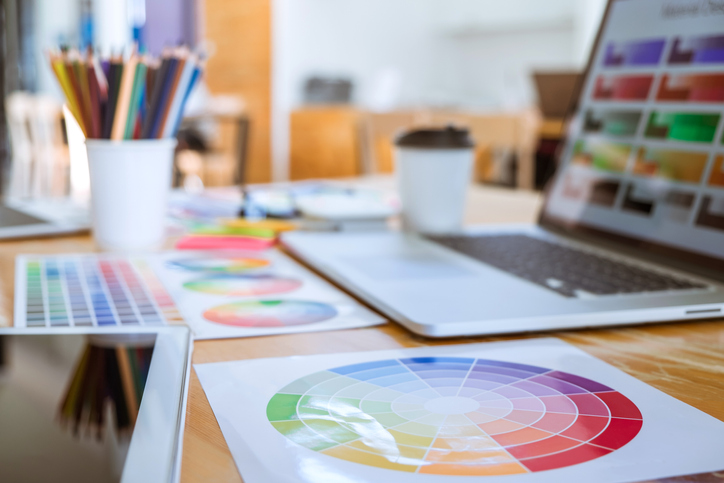Tell a Beautiful Story with Five Design Principles
Did you know that 90% of the information processed by your brain is visual?

Design is powerful.
It takes only 13 milliseconds for the human brain to process an image, and 80% of people will remember the visuals they see. In today’s generation, audiences demand short, highly-visual content, and coordinating your design elements is the best way to tell a rich, compelling story.
Knowing this is one thing, but making it happen is another. As a design novice, watching a graphic artist work can be a mystifying experience. How do they know which colors to use? Why do those fonts look so good together? How are these images evoking such an emotional response?
While there are no right or wrong answers in design, basic principles can transform one person’s coloring page into another person’s masterpiece.
Check out principles like these to elevate your designs from good to GREAT.
1. Emphasis
The principle of emphasis demands you ask one question: what is the first piece of information I need people to know?
Like building without a blueprint, starting your publication without a clear idea of your message structure will bring a muddy result.
2. Proportion
Proportion helps you group your design in sections, like consolidating elements by size, amount, or numbers.
Whether it’s columns in a magazine, sidebars on a poster, or pull quotes in a newsletter, proportion communicates importance and helps the brain decode information.
3. Contrast
What do people mean when they say a design really “pops?”
Contrast refers to obvious differences on a page. Contrast attracts the eye, organizes information, and guides the reader. Contrast can be created with varying font pairings or line weights, extreme color differences, and graphics that display opposites. You can contrast a smooth texture with a rough texture, curves with sharp edges, a horizontal image with a vertical one, or widely spread lines with closely packed ones.
For contrast to be effective, it must be strong. Go big! (Think red sneakers with a black tuxedo.) If you are putting two elements on the page that are not the same, they should not be similar. If the items are not exactly the same, make them very different.
4. White Space
White space (or negative, empty space) is the only element that specifically deals with what you don’t add to a design.
Like one diamond set on a stone, white spaces give designs room to breathe and make mediocre images seem more luxurious.
5. Movement
Movement refers to the way an eye travels over a design.
Just like a musician reads notes on a staff, a reader should follow a visual journey through your design. For viewers to engage, they must have a path to follow, so try to tell a “visual story” with a beginning, middle, and end.
To move people through your piece, start with a focal point and then move eyes through the page with subheadings, text boxes, line patterns, etc. Use bright colors to grab attention, jagged lines to build excitement, curves to slow people down, or patterns to guide your viewers.
First Impressions are Lasting Impressions
While there is no right or wrong design method, principles like these keep visuals stable and cohesive while allowing for movement, unity, and excitement.
Want your first impression to be your best impression? Through the planning, design, and review process, we’re here for you. Whether you’re creating a template or need start-to-finish graphic design, we’re ready to consult, create, and help you bring your best ideas to life in print!
